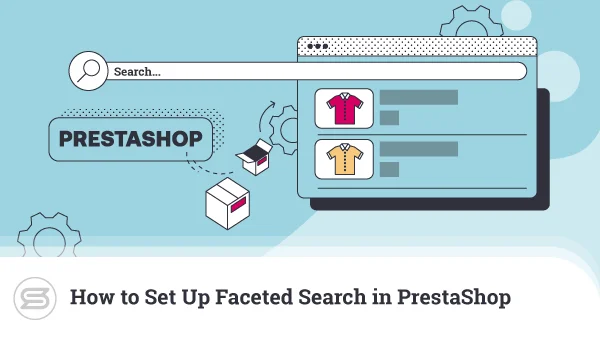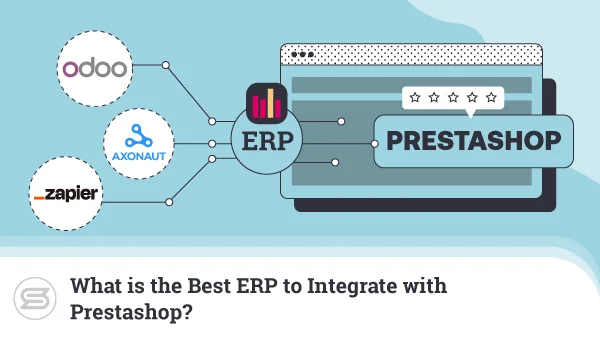PrestaShop vs Magento – Which One Should You Choose?
According to W3Techs, Magento powers about 1.2% of all CMS-based websites, and with 0.8%, PrestaShop is not far behind. This may not seem like the most impressive piece of statistics you’ve ever seen, but it still means that PrestaShop and Magento are the two most popular standalone, self-hosted ecommerce platforms in the world.
Online store owners wonder which of the two is the best fit for their projects, and today, we’ll help them find out.
What is Magento?
Launched in 2008, Magento is an open-source ecommerce platform written in PHP. It held the crown of the most widely used application of its kind for years, and its popularity helped it secure a $1.7 billion acquisition by Adobe in 2018.
Although it’s currently lagging behind platforms like WooCommerce and Shopify, Magento’s versatility, scalability, and wide range of customization options still make it a perfect fit for many projects.
Magento Open Source is available as a free download and should meet the requirements of most ecommerce projects. Enterprise-grade customers can get a paid version called Magento Commerce. That one has a few extra features as well as 24/7 support and can be hosted either by the site owner or on Adobe’s cloud infrastructure.
What is PrestaShop?
PrestaShop was released a year before Magento, but it never managed to make such a profound impact on the market. That said, while Magento has been losing ground lately, PrestaShop has been steadily gaining new users, and the gap between the two is shrinking.
PrestaShop is available as a free download only. There’s no readily available support unless you’re willing to pay for it, but you can always rely on a large community of PrestaShop fans who can help you out.
Presta is considered more suitable for startups and smaller projects mainly because it doesn’t have as many features as Magento by default. That said, there’s a large marketplace of templates and modules that help you create a good-looking, functional online store.
Magento Pros & Cons
Pros:
- Incredibly flexible – Magento is famously suitable for just about any project. Its open-source nature means that if you have the required skills – you can modify it to your heart’s content.
- Wide range of features – Even Magento’s free version is packed full of features, which means you won’t necessarily need to spend time and money installing dozens of extensions and expanding the platform’s functionality.
- Third-party integrations – One of the reasons so many corporations use Magento is the easy integration with ERP and CRM solutions. This turns Magento into something more than a mere ecommerce website builder.
- Mobile-friendly – Magento 2 was rolled out in 2015, and it brought about many changes. Some of the major ones revolved around the new responsive design, which means Magento-based websites tend to work well on both desktop and mobile devices.
- Helpful community – Magento’s popularity means that quite a few people have spent years working with the app and know its ins-and-outs. Whenever you need assistance, you are more than likely to find either a person who can answer your question or a helpful article or tutorial to guide you through.
- Search engine friendly – Magento’s wide range of SEO features has earned it the reputation of the most search engine friendly self-hosted ecommerce platform on the market.
- Highly scalable – One of Magento’s main plus points is that it works equally well with 10 or 10,000 products. The platform can process thousands of transactions per hour, meaning you can watch your store grow without thinking about reaching Magento’s limits.
Cons:
- Price – Paying customers who need Magento’s premium version will need to set aside a substantial budget. The pricing depends on the individual project, but monthly bills can run well into the four-figure range.
- Complexity – The numerous features built into the Magento core make the application tricky to customize for many programmers. If you need any custom features developed specifically for your store, finding the right person for the job will be neither cheap nor easy.
- Not particularly easy to use – Magento is an incredibly versatile platform, but because you have so many features enabled by default, finding your bearings and mastering the application may not be as easy as you might have hoped.
PrestaShop Pros & Cons
Pros:
- Completely free – PrestaShop is only available as a free download. You can use it for as many projects as you want, and because it’s open-source – you can also modify its source code to customize its functionality.
- Very user-friendly – PrestaShop is famous for its easy installation and intuitive backend interface. It may take a bit of getting used to, but even the more inexperienced users should have no serious problems working with it after a while.
- Tons of add-ons – Compared to other ecommerce platforms, PrestaShop presents its users with a much more diverse range of themes and modules that help you customize your store’s design and give it additional functionality.
- Minimal hardware requirements – The application has no specific requirements for the server it’s running on. If you’re just getting started, you can even build your website on a cheap shared hosting plan, making PrestaShop a cost-effective solution for new projects.
- Clean default installation – Because PrestaShop’s core isn’t stuffed full of features and tools, its performance is much more lightweight and stable.
- Ecommerce analytics – PrestaShop has built-in tools that help you see how users behave when they land on your online store. Detailed information on important metrics like traffic and conversion rates is easily accessible, allowing you to closely monitor your shop’s success.
- Support for multiple languages – PrestaShop is available in over 70 languages and supports various currencies. With the right modules, you can create a truly international store in no time.
Cons:
- Limited scalability – Technically, you have no limitation on the number of products you sell through your site. Still, PrestaShop is aimed at small to medium-sized projects and not particularly suitable for high-traffic online stores.
- Design limitations – Once you pick a theme for your PrestaShop store, you can customize it to some extent. However, compared to its niche competitors, the options for creating a truly unique, professional-looking design are somewhat limited.
- Expensive templates and modules – PrestaShop doesn’t have that many built-in features, and you’ll likely need to install a few add-ons to achieve your objectives. Many of the plugins are paid, so make sure you plan your budget accordingly.
How to Choose the Right Ecommerce Platform?
Choosing between two ecommerce platforms for your future online store requires more than just listing advantages and disadvantages. You need more details on what the two applications do and how they do it. Here’s how PrestaShop and Magento stack up.
Ease of use
As long as you pick a managed hosting plan, you are unlikely to have problems installing either of the two shopping carts on your hosting account. If you don’t have an auto-installer integrated into your control panel, you can often ask the provider’s support team for help.
Once installed, you will quickly be able to tell the difference between Magento and PrestaShop.
PrestaShop has by far the more user-friendly interface. Its admin panel is nicely laid out, and even a complete beginner can easily find what they’re looking for. Magento’s backend isn’t confusing once you get used to it, but the wider variety of features means you need to spend some time mastering it.
Themes
Hundreds of themes and templates are available on the official Magento marketplace and many third-party websites. Historically, Magento has been the more popular application, so you can find more themes for it.
Magento’s real advantage, however, comes from a wider range of customization options, allowing you to fine-tune even the smallest details of your shop design.
Performance
Magento’s built-in features make it one of the most versatile platforms of this kind. You can use it for just about any online shop imaginable without the need to install dozens of add-ons. Unfortunately, all the extra tools and features make it rather resource-intensive, so Magento tends to outgrow its hosting plans more quickly than its competitors.
PrestaShop doesn’t have quite as many features by default, and its performance is much more streamlined. Provided you don’t hog the installation down with too many modules and plugins, you should be able to use PrestaShop on an affordable plan for much longer.
Extensions
The communities supporting the two applications develop add-ons you can use to expand the shopping carts’ functionality and boost your site’s user experience. With Magento, many features are integrated into the default installation, so predictably, fewer extensions are available for it.
PrestaShop’s official marketplace hosts nearly 4,000 modules, and all the functionality you’ll ever need is most likely there. However, as many of the extensions are paid, store owners need to keep an eye on the budget.
SEO
Magento definitely has the edge when it comes to search engine optimization. Features like image optimization, product meta tags, canonical tags for categories and products, and robot.txt files editor are enabled by default, making Magento the most SEO-friendly application of this kind.
PrestaShop also comes with a few SEO features out of the box, and you can further optimize the site using modules. Without extra effort, however, the results are unlikely to be as good as Magento’s.
Security
An up-to-date Magento installation on a properly configured server is secure by default, and the same is true for PrestaShop. Both platforms have robust security mechanisms to keep people’s data safe, and plugins and extensions can enable additional features for extra peace of mind.
Nevertheless, your role as a site administrator should not be underestimated. Store owners must keep their core application, add-ons, and plugins up-to-date at all times, following a number of other important security practices as well.
Support
Support is often a concern for people considering using an open-source platform, which is not completely unfounded.
PrestaShop gives you access to a ticketing system where you can get expert assistance, but only if you pay a little over $300. Similarly, a dedicated Magento support team is at your service only if you buy the shopping cart’s premium version.
Most store owners can’t afford the extra fees, but, luckily for them, there’s no shortage of helpful resources available on the internet. Often, members of the community and your hosting provider’s support agents should be able to guide you in the right direction as well.
Pricing
Although Magento has a paid version, it’s mostly aimed at large companies and enterprises, and you’re unlikely to need it from the very start. There are other things to consider, though.
Both Magento and PrestaShop are self-hosted platforms, meaning you need to factor in costs like hosting, an SSL certificate, and a domain registration fee. You can find free themes and extensions, but you will most likely need a few premium add-ons as well. Ultimately, the budget you need to set aside is determined by all these expenses.
Magento vs PrestaShop: Which One to Choose?
Your choice of an ecommerce platform will have a significant impact on the entire project’s future. It determines the ease with which you’ll launch your online store and affects how it looks and functions. That’s why it’s so important to carefully consider the options before deciding which application suits your needs the best.
Magento is definitely the more comprehensive solution. It’s more powerful than PrestaShop and offers a wider range of features out-of-the-box. Magento is unmatched when it comes to scalability as well, which makes it perfect for more high-traffic projects. The downside of all this is that it presents inexperienced users with a steeper learning curve and requires more hardware resources to run smoothly.
PrestaShop, on the other hand, is lightweight and beginner-friendly. It’s not as feature-rich as Magento by default, but the wide range of extensions should give you the functionality you need. Getting the unique design you’re after may be slightly difficult, however, and the application often struggles when faced with a large volume of traffic and transactions.
Many people will tell you that PrestaShop is perfect for small to mid-scale projects, while Magento is more suitable for larger, more popular online stores, and there is an element of truth to this.
However, when choosing an ecommerce platform, you need to consider several other things, including your experience and level of technical skills, your project’s specific objectives, and your budget.
ScalaHosting and Ecommerce Websites
The ecommerce industry is thriving, and the number of new online stores is growing at break-neck speed. Their success or failure depends not only on the underlying platform but also on the hosting service that powers them. At ScalaHosting, we make sure to provide the best possible growing environment.
We have solutions specifically optimized for ecommerce sites based on PrestaShop and Magento. Our system administrators put decades of experience to work, ensuring the two applications run smoothly on our servers.
Our shared plans give you a cost-effective starting point, and you can use them to get your project off the ground. However, if you need more power and security, you’ll likely want to take a look at our managed VPS solutions, especially if you decide to go for Magento. You get an easily scalable isolated environment with guaranteed hardware resources and a dedicated IP.
You can expect much more reliable performance and improved security thanks to the fact that, instead of sharing the virtual server with hundreds of other users, you have it all for yourself.
Conclusion
PrestaShop and Magento have both been around for well over a decade now, and they continue to power thousands of projects all around the world. Both have advantages and disadvantages, and deciding which one is more suitable for your online store is not as easy as you may think.
As long as you know which factors you need to take into account, however, you should have no problems making the right choice.
FAQ
Can I use Magento and PrestaShop to create an ecommerce site with no coding experience?
Yes, you absolutely can. Both ecommerce platforms might take some getting used to, but Magento presents a steeper learning curve. Still, if you’re willing to invest enough time and effort, you can master them.
Will I get any official support with Magento and PrestaShop?
Adobe offers support only for Magento’s premium version, which is aimed at corporate clients and rather out of reach for most store owners. PrestaShop offers a paid support plan, which, unfortunately, is also on the steep side.
You should be able to get the information you need without paying for official support, though. There are plenty of helpful online resources for both platforms, and if you’re feeling stuck – you can always ask the community or your hosting provider’s support team for guidance.
How customizable are Magento and PrestaShop?
Both Magento and PrestaShop have official marketplaces with themes and plugins that can completely transform your website’s look and functionality. Magento offers more customization options, especially when it comes to appearance. It also has more options enabled by default, so you’ll likely need fewer add-ons.
With PrestaShop, you’ll probably find it a bit harder getting the design you’re after. Still, thanks to the wider range of addons, adding all the features you need to your store without compromising the performance shouldn’t be a problem.
ScalaHosting – PrestaShop vs. Magento – Which One Should You Choose



